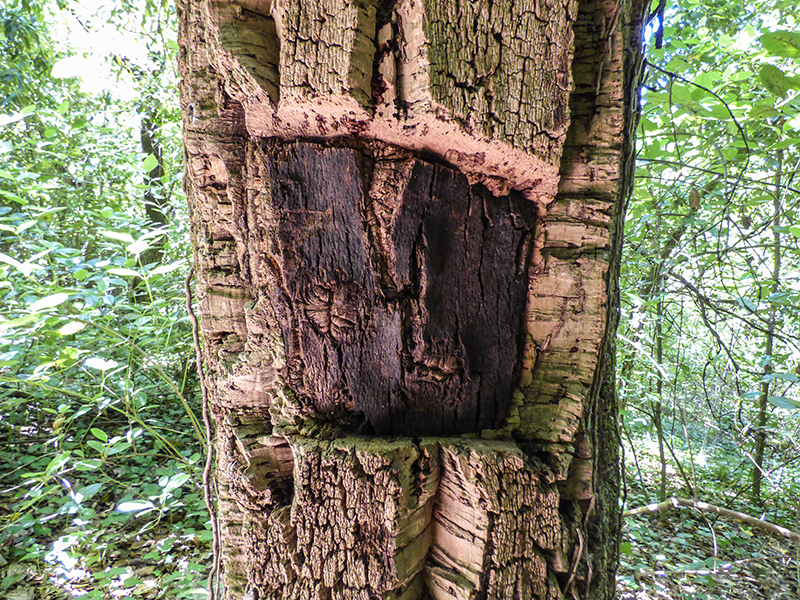Cork, which is obtained from the bark of the cork oak, grows mainly around the Mediterranean Sea. The cork oak prefers to grow in dry soil. For cork production, the tree does not need to be felled--instead the bark, which regrows again, is removed. This harvest can only be repeated every seven to nine years, depending on climatic conditions.

A single cork oak can produce 100 to 200 kilos of cork during its lifetime. The main producer of cork is Portugal, which cultivates natural cork on an area of approx. 750,000 hectares. This area corresponds to about 8 percent of the total area of Portugal.
The footbeds of our leather & cork sandals are made of high-quality cork. Due to the minimal processing, this regenerative raw material retains its natural positive properties. Cork has a high elasticity, is heat and sound insulating, and has excellent damping properties. In addition, cork is also water repellent. This is what makes cork so popular and ubiquitous as a material.
To produce the footbed, natural cork is blended with natural rubber and baked. Then our ground cinnamon filling is placed between the cork and the cover leather layer, which ensures daily freshness. In addition, these sandals, just like our cinnamon insoles, also are very helpful in combating bad foot odor. The sandals absorb stubborn foot sweat and produce a pleasant scent.
The cork layer under the footbed supports the natural rolling movement of the foot. The high-quality EVA sole compensates for minor unevenness and also gently cushions the motion of walking.








